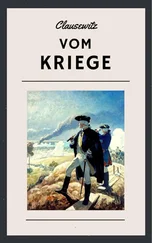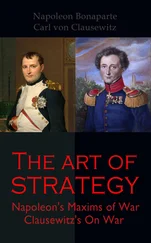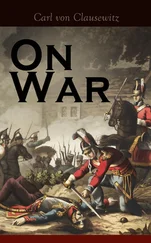To inquire 'how is this?' is inquiry.
To point out the way as 'thus,' is narration (ákhyána).
To entreat as 'give,' is request.
To say that 'I do not give,' is refusal.
To say that 'it is not worthy of thee,' is censure (upálambhah).
To say as 'do not do so,' is prohibition (pratishedha).
To say that 'this should be done,' is command (chódaná).
To say 'what I am, thou art that; whichever article is mine is thine also, is conciliation (sántvam).
To hold out help in trouble is promise of help (abhyavapattih).
Pointing out the evil consequences that may occur in future is threat (abhibartsanam).
Persuasion is of three kinds: that made for the purpose of money, that made in case of one's failure to fulfill a promise, and that made on occasion of any trouble.
Also writs of information, of command, and of gift; likewise writs of remission, of licence, of guidance, of reply, and of general proclamation are other varieties.
Thus says (the messenger); so says (the king); if there is any truth in this (statement of the messenger), then the thing (agreed to) should at once be surrendered; (the messenger) has informed the king of all the deeds of the enemy. (Parakára);—this is the writ of information which is held to be of various forms.
Wherever and especially regarding Government servants the king's order either for punishment or for rewards is issued, it is called writ of command (ájnálékha).
Where the bestowal of honour for deserving merit is contemplated either as help to alleviate affliction (ádhi) or as gift (paridána), there are issued writs of gift (upagrahalekha).
Whatever favour (anugraha) to special castes, cities, villages, or countries of various description is announced in obedience to the king's order, it is called writ of remission (pariháralékha) by those who know it.
Likewise licence or permission (nisrishti) shall be enjoined either in word or deed; accordingly it is styled verbal order or writ of licence.
Various kinds of providential visitations or well ascertained evils of human make are believed to be the cause for issuing writs of guidance (pravrittilékha) to attempt remedies against them.
When having read a letter and discussed as to the form of reply thereto, a reply in accordance with the king's order is made, it is called a writ of reply (pratilékha).
When the king directs his viceroys (isvara) and other officers to protect and give material help to travellers either on roads or in the interior of the country, it is termed writ of general proclamation (sarvatraga lekha)
Negotiation, bribery, causing dissension, and open attack are forms of stratagem (upáya).
Negotiation is of five kinds:—
Praising the qualities (of an enemy), narrating the mutual relationship, pointing out mutual benefit, showing vast future prospects, and identity of interests.
When the family, person, occupation, conduct, learning, properties, etc. (of an enemy) are commended with due attention to their worth, it is termed praising the qualities (gunasankírthana).
When the fact of having agnates, blood-relations, teachers (maukha), priestly hierarchy (srauva), family, and friends in common is pointed out, it is known as narration of mutual relationship (sambandhópakhyána).
When both parties, the party of a king and that of his enemy are shown to be helpful to each other, it is known as pointing out mutual benefit (parasparópakárasamdarsanam).
Inducement such as 'this being done thus, such result will accrue to both of us,' is showing vast future prospects (Ayátipradarsanam).
To say 'what I am, that thou art; thou mayest utilize in thy works whatever is mine,' is identity of interests (átmópanidhánam).
Offering money is bribery (upapradána).
Causing fears and suspicion as well as threatening is known as sowing dissension.
Killing, harassing, and plundering is attack (danda).
Clumsiness, contradiction, repetition, bad grammar, and misarrangement are the faults of a writ.
Black and ugly leaf, (kálapatrakamacháru) and uneven and uncoloured (virága) writing cause clumsiness (akánti).
Subsequent portion disagreeing with previous portion of a letter, causes contradiction (vyágháta).
Stating for a second time what has already been said above is repetition.
Wrong use of words in gender, number, time and case is bad grammar (apasabda).
Division of paragraphs (varga) in unsuitable places, omission of necessary division of paragraphs, and violation of any other necessary qualities of a writ constitute misarrangement (samplava).
Having followed all sciences and having fully observed forms of writing in vogue, these rules of writing royal writs have been laid down by Kautilya in the interest of kings.
[Thus ends Chapter X, "The Procedure of Forming Royal Writs," in Book II, "The Duties of Government Superintendents," of the Arthasástra of Kautilva. End of thirty-first chapter from the beginning.]
CHAPTER XI. EXAMINATION OF GEMS THAT ARE TO BE ENTERED INTO THE TREASURY.
Table of Contents
THE Superintendent of the treasury shall, in the presence of qualified persons, admit into the treasury whatever he ought to, gems (ratna) and articles of superior or inferior value.
Támraparnika, that which is produced in the támraparni; Pándyakavátaka, that which is obtained in Pándyakavata; Pásikya, that which is produced in the Pása; Kauleya, that which is produced in the kúla; Chaurneya, that which is produced in the Chúrna; Mahéndra, that which is obtained near the mountain of Mahéndra; Kárdamika, that which is produced in the Kárdama; Srautasíya, that which is produced in the Srótasi; Hrádíya, that which is produced in (a deep pool of water known as) Hrada; and Haimavata, that which is obtained in the vicinity of the Himalayas are the several varieties of pearls.
Oyster-shells, conch-shells, and other miscellaneous things are the wombs of pearls.
That which is like masúra (ervum hirsutam), that which consists of three joints (triputaka), that which is like a tortoise (kúrmaka), that which is semi-circular, that which consists of several coatings, that which is double (yámaka), that which is scratched, that which is of rough surface, that which is possessed of spots (siktakam), that which is like the water-pot used by an ascetic, that which is of dark-brown or blue colour, and that which is badly perforated are inauspicious.
That which is big, circular, without bottom (nistalam), brilliant, white, heavy, soft to the touch, and properly perforated is the best.
Sirshaka, upasirshaka, prakándaka, avaghátaka, and taralapratibandha are several varieties of pearl necklaces.
One thousand and eight strings of pearls form the necklace, Indrachchhanda.
Half of the above is Vijayachchhanda.
Sixty-four strings make up Ardhahára.
Fifty-four strings make up Rasmikalápa.
Thirty-two strings make up Guchchha.
Twenty-seven strings make up Nakshatramála.
Twenty-four strings make up Ardhaguchchha.
Twenty strings make up Mánavaka.
Half of the above is Ardhamánavaka.
The same necklaces with a gem at the centre are called by the same names with the words 'Mánavaka' suffixed to their respective names.
When all the strings making up a necklace are of sirshaka pattern, it is called pure necklace (suddhahára); likewise with strings of other pattern. That which contains a gem in the centre is (also) called Ardhamánavaka.
That which contains three slab-like gems (triphalaka) or five slab-like gems (panchaphalaka) in the centre is termed Phalakahára.
An only string of pearls is called pure Ekávali; the same with a gem in the centre is called Yashti; the same variegated with gold globules is termed Ratnávali.
Читать дальше












